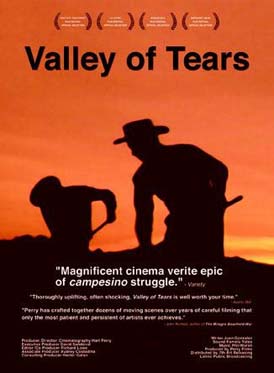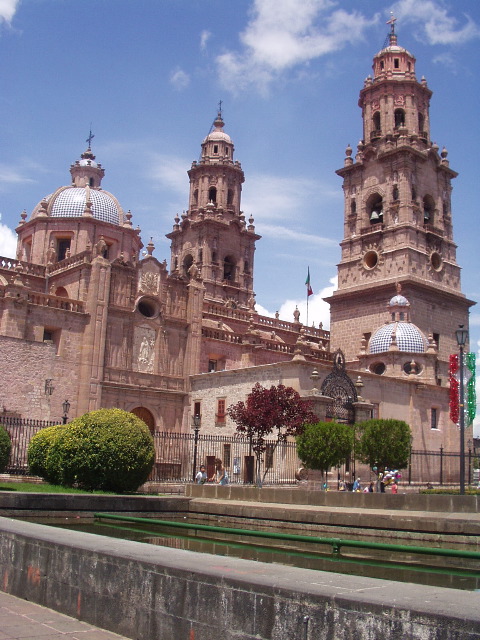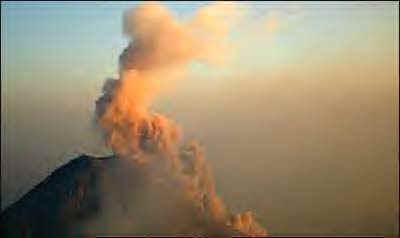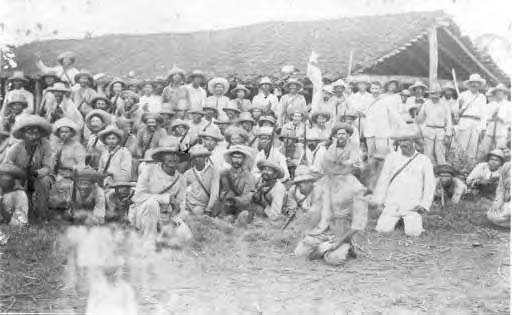|
Trejo,
from Spain to the Americas by Paul
E. Trejo
I am sending this letter to distant primos (cousins)
as well as my own immediate bloodline and hence, the general
salutation. I have been doing research into the origin of the TREJO
family and family name and thought I might share some of my findings.
It may assist those of you that are interested in the subject in your
research. My feeling is that this type of material is useless buried
in the files.
THE SPANISH HERITAGE
My source of information about the early Trejos in
Spain comes from a remarkable work called "Blasones y Apellidos"
(Coats of Arms and Surnames) that was authored by Joaquín Porrúa, a
recognized genealogist and researcher of high reputation. Published in
Mexico City in 1987, this Tomo includes the origin and some history of
many of the original Spanish families that immigrated to New Spain.*
In the case of the Trejos, the period covered is basically between
1500 and 1700. The section of "Blasones y Apellidos" that
included the Trejo family is appended, along with my English
translation. It is my understanding that "Blasones" has been
out of print for some time, and should you find a copy expect to pay
at least $150.00 for it. The Trejo pages were provided to me by
Ophelia Marquez, secretary for the Society of Hispanic Historical and
Ancestral Research. I have also included information from other
sources.
All of the early Trejos were natives of the town of Plasencia
in the Province of Cáceras,** Spain, from which they traveled and
settled in the surrounding villages and provinces. Plasencia is
located approximately 240 miles north of the port city of Cadíz. The
modern population of Plasencia is about 21,300. Together, the
provinces of Cáceras and Badajoz comprise that part of Spain known as
Extremadura.* Until 1821, when Mexico declared its independence from
Spain, this part of the Spanish territories in the New World was known
as New Spain.
** Do not confuse the Province of Cáceras with the
city by the same name which is the capital of the Province.
The provinces of Extremadura are rugged in nature
and have always required additional effort to subsist on. Even today
Extremadura is relatively near the bottom of Spain's economic ladder.
It was only natural that large numbers of farmers, herdsmen and
disenfranchised noblemen, realizing that the future at home was bleak,
volunteered in large numbers for service in the New World. Little did
they know that the lands to which they traveled were similar in
nature, arid, open and hard. It can be said that Extremadura's
"golden age" occurred in the 16th and 17th centuries, when
men of Extremadura returned home, using wealth acquired in the New
World to build the mansions and palaces for themselves, particularly
in the city of Cáceras.
Extremadura is referred to by some historians
as "the Cradle of the Conquistadores" because so many of the
most famous discoverers/ explorers/conquerors of the New World were
born there. Among them were Hernán Cortez who marched through Mexico;
Francisco Pizarro who conquered the Inca Empire of Peru;
Pedro de Alvarado who subdued the Maya Indians of Guatemala; Pedro de
Valdivia who founded Santiago (Saint James), but failed to master the
Mapuche Indians of Chile; Vasco Núńez de Balboa who first viewed
the Pacific Ocean from the Isthmus of Panama; Francisco de
Orellana, the first explorer to navigate the Amazon, and Hernando de
Soto, discoverer of the Mississippi River and conqueror of Florida.
It
is evident from "Blasones" that Trejos were involved in more
than one military campaign in the Conquest of South America and New
Spain, including the expedition of Cabeza de Vaca.The ancestors of
these 16th and 17th century conquistadores were the veterans of the
legions of Emperor Caesar Augustus who in 23 BC gave them lands around
Merida to farm upon their retirement from active duty. Thus, there is
a solid basis to the claims that many of the early Spanish families
have strong Italian bloodlines.
During the Middle Ages the sons of
Extremadura filled the ranks of such Christian corps as the Knights
Templar, the Knights of Santiago (Saint James), and the Knights of
Alcantara who fought the battles of La Reconquista (the reconquest),
which in the 15th century finally drove the infidel Moors from Spain
after an occupation of 800 years. As noted in "Blasones" a
substantial number of important Trejos were Knights of Santiago (Saint
James), Knights of Alcantara, and Knights of Calatrava. Of some
interest and possible speculation is the single reference in "Blasones"
that the Trejos may originally have come from Rome or the ancient
Italian village(s?) of Triciviam, Tricium, Tricio. As previously
noted, many of the Roman legionnaires settled in this part of Spain
making a strong "Italian Connection" not unlikely. Also,
"Blasones" points out that don Gabriel Trejo Paniagua, Onroy
y Trejo was made Archbishop of Salerno in Naples at the request of
King Phillip IV; don Fernando of the Cerda, Trejo, Monroy and Bermudez
Grimaldo was a member of the Council of Italy, and don Francisco of
Trejo stated that he owned the Barony of Baluf in Italy.
TREJOS IN THE
NEW WORLD
It is evident on reading "Blasones" that
many of the early Trejos were primarily warriors, clergymen, mayors,
magistrates, judges and the like. Positions of title, power, and
influence were often a matter of inheritance. The eldest son in most
cases inherited the lands and titles, while the younger sons had to
fend for themselves. Thus, there were a number of these
disenfranchised members of prominent families among the hordes of
volunteers that settled in New Spain and South America.
Between
1493-1519 over fifty-six thousand settlers migrated to the Indies,
that is, the islands of Santa Domingo (Cuba), Hispanola (now Haiti and
the Dominican Republic) and the like. Many of these including Trejos
eventually traveled from there to South and Central America, and the
provinces of New Spain (Mexico). From 1520-1539 another forty thousand
migrated to the New World, especially to Peru and New Spain. Data on
these settlers is published in Peter Boyd-Bowman's monumental works
Volumes I and II from which the Trejos listed in a subsequent
paragraph were extracted. There were only a few outposts guarded by
presidios on the rugged Northern Frontier of New Spain, and hence the
population was concentrated in the larger villages/pueblos of Sonora,
Sinaloa, Nueva Galicia and the like. Many of the Trejos that I have
met in California are from Chihuahua and villages in Sinaloa and
Sonora. There are numerous Trejos in Texas, Arizona and New Mexico
that are recorded in the Latter Day Saints (LDS) Family History
Centers.
The first Trejo in California was a female of the bloodline.
She was Maria Angela Trejo* and came to San Francisco in 1776 with the
famous Juan Bautista de Anza expedition. Maria Angela Trejo was born
at the San Miguel de Horcasitas Presidio in Sonora about 1745. She was
married to Domingo Alviso, a corporal in the San Miguel company.
Domingo was also born in Horcasitas, Sonora about 1740, and was
recruited there by Captain Juan Bautista de Anza on 5 May 1775 to
occupy and settle the port of San Francisco, Alto California.
Angela
Trejo and Domingo Alviso had four children ranging in age from five
months to fourteen years with their parents to San Francisco.On
arriving in San Francisco in 1776, Domingo Alviso died, as did the
wife of Pedro Antonio Borjorquez (Bohorquez) another member of the
expedition. Maria Angela Trejo, widow of Alviso, promptly married
Pedro Antonio Borjorquez at Mission Delores in San Francisco on 20
July 1777. Pedro and Angela had three sons who married into the
families of Villavicencio, Linares and Pacheco. One of these latter
Maria Angela Trejo is sometimes listed as Maria Angela Cumacero
or Chumasero as her husband Domingo Alviso was also known as Domingo
Chumaseromarriages, that of Bartolome Francisco Borjorquez to Nicolasa
Linares produced ten children.
Between Angela's children by Alviso and
those by Borjorquez the genes of Maria Angela Trejo flow in the blood
of many, many of the early California families. Maria Angela Trejo was
buried 4 January 1803 at Mission San Carlos, Monterey at 58 years of
age. Anyone interested in this line should see Spanish-Mexican
Families of Early California: 1769-1850, Marie E. Northrup, Vol. I,
1976, Vol. II, 1984, (Both Reprinted), Southern California
Genealogical Society, Burbank, California.
My own bloodline of Trejo
originates in Sonora, Mexico. My great grandfather, Julian Trejo was
born in 1838 in Arispe, Sonora, Mexico. His parents were Jacinto Trejo
and Maria Josepa Lopez. Julian Trejo married Catalina Bielmas at
Mission San Luis Obispo on 23 October 1867. They had ten children of
which my grandfather Santos (Tibo) was one. Equally as exciting is my
father's mother's side which I have been able to trace back to Molina,
Valencia, Spain, 1727, El Fuerte, Sinaloa, 1755, and Villa de Sinaloa,
Sinaloa, 1769. There are many famous/historic personages on this side,
and if any of my Trejo cousins of my line are interested in more
details, they should communicate with me.
PETER BOYD-BOWMAN'S WORKS
The
following list of Trejos. were translated from Peter Boyd-Bowman's
works: Indice geobiografico de mas de 56 mil pobladores de la America
Hispanica, Volume I, 1493-1519 (Geographic Index of more than 56
Thousand Settlers of Hispanica America 1493-1519) and Volume II, Forty
Thousand Settlers, 1520-1539.It should be noted that on this list are
found some of those same individuals that appear in "Blasones",
and that some are listed in Volume II as later traveling from the
Indies to South America and New Spain. The order of data for each
entry is name, Peter Boyd Number, Province of Origin, Town,
Occupation, Numerical Listing, and Parents or Other Data.Vol. I
1493-1519
1. Juan de Trejo, Boyd No. 868, Cáceres, Almaraz,
son of resident, to Indies 1513, Catalog I, passenger No. 934, parents
Martin de Trejo, Beatrice la Jusdada.
2. Fernando (Francisco ??) de
Trejo, Boyd No. 955, Cáceres, Coria (de Galisteo),resident,son of
resident of Perales in Cameras, to Indies 1513, Catalog I, passenger
No. 1025, Father Fernando de Trejo (see entry 5 below).
3.Rafael de
Trejo, Boyd No. 1057, Caceres, Plasencia, son of resident, to Indies
1514, Catalog I, passenger No. 1697, parents Juan de Toro (Trejo),
Maria GonzalezVol. II 1520-1539
4. Cristobal de Trejo, Boyd No. 2886, Cáceras,
Coria (de Galisteo), native of Coria, to Indies 1528, Catalog I,
passenger No. 3714, parents Pedro Sanchez, Marie Suarez de Trejo.
5.
Francisco de Trejo, (see entry 2 above), Boyd No. 2887, Cáceres,
native of Coria (de Galisteo), conquistador in Santa Domingo (Cuba)
1520-1535, to Mexico 1535, resident Guadalajara (New Galicia),
pacificatio of New Galicia 1541, (with the Viceroy), resident
Guadalajara 1547, (Ic numero 1130), parents Fernando de Trejo, Isabel
Gonzalez.
6. Pedro de Trejo, Boyd No. 3074, Cáceras, native of
Plasencia, to Mexico about 1537, pacification New Galicia 1541 (with
Viceroy), married to daughter of discharged soldier, de la Torre
(widow of the Conquistador of New Galicia Francisco Barron), was alive
in 1547, (Ic numero 543), parents el Capitan Diego de Trejo and Isabel
de Contreras.
7. Pedro de Trejo, Boyd No. 3075, Cáceras, resident of Plasencia, to Mexico 1537 (II, 3645) in Mexico 1568 (Med,
Primit Inquisition, 283;The Jews in New Spain, 149) parents Pedro de
Trejo and Isabel Gutrerrez.
THOSE TREJO "FAMILY" BOOKS
There are a couple of books published on the Trejos
by Halbert's Publishing Company of Bath, Ohio. I have seen one called
"The Amazing Story of The Trejos in America" by Sharon
Taylor. Another is called "The World Book of Trejos" by a
Lewis Trejo, also published by Halbert's. I have not seen this second
book, but from the descriptive literature it sounds like a rehash of
Sharon Taylor's book. These books purport to give you a family history
for a tidy sum. Taylor's did not. Lewis Trejo's book sells for $49.50.
If anyone has purchased Lewis Taylor's book and it provides more
information than I have provided to you free in this letter, please
let me know. Taylor's book on Trejos appeared to be organized in such a
general fashion that it would fit any surname. It told nothing about
the Trejo surname in particular or Trejo history. It did provide a
general dissertation on how surnames are formed. In this way any
surname could be plugged in and the book sold. However, this book also
provided some very good basic information on elementary heraldry, but
nothing beyond that which can be found in any complete city library.
The Coats of Arms found in "family
history" books should be consistent, especially if the family
surname originated in a country such as Spain that maintained accurate
heraldic records. There are two basic differences between the Trejo
coat of arms found in Sharon Taylor's "Amazing Trejos" and
that shown and described in "Blasones". One difference is
the color of the crescent moons on the shield and the other is their
position. Sharon Taylor's source is the Rietstap Armorial General
which states the crescents are silver and turned to the right and left
(diagram appended). Blasones states that the crescents are red and
pointed downward. I favor the "Blasones" version which is
quoted as being from a manuscript by don Bias (1610) and found in the
Royal Academy of the History of Spain. This seems very close to the
time frame and true source of the coat of arms grant which had to be
from the King of Spain. Perhaps a later Trejo did not like the color
of the moons or the direction they pointed and arbitrarily changed his
crest.
My own description of a family crest would be as follows: On a
field of Gold (a gold shield) a Silver Castle (or tower) upon a sea of
Blue with ripples of Silver, the Castle flanked by six Crescent Moons
of Red arranged as follows: two vertical bands, three on each side
with the Crescents pointed downward. Since the rest of the crest is
arbitrary, I would choose a silver knight helmet with a plume of red
(to match the crescents) and green leaf work surrounding the shield.
I am attempting to have such a crest produced in
color by an artist friend of mine. Anyone interested in a copy let me
know. Time to close. Your comments on this epistle are
welcome, as are any additional contributions.
Sincerely,
PAUL E. TREJO PGBlueCoat@aol.com
Source: Translation of Trejo Family origin and early family history
from BLASONES Y APPELLIDOS (Coats of Arms and Surnames), First
Edition, By Fernando Munoz Altea, Publisher JOAQUIN PORRUA, S.A. DE C.
V. Mexico (1987).
[An] extremely nobel and old line, with important manor house in
the town of Plasencia (Province of Cáceres), from where they traveled
to other places in this region, Castilla, Andalucía and America. In
the listed population, the Trejos are conspicuous with [the] highest
offices (posts) from the 13th century, especially as possessors of
Commissions of the Orders of Calatrava and Alcántara.
Some genealogists pretend (claim) that this family came from Rome,
indicating next from Tricivium, Tricium, Tricio.
One of the most important personages of this house was don Gabriel
Trejo Paniagua (Bread and Water), Onroy y Trejo, native of Plasencia,
Knight of the Military Order of Alcantara (1602), Senior Professor/
Student in the (college) of the Archbishop of Salamanca where he was
Professor of Vespers, Attorney General of the Royal Chancery of
Prisons, Attorney General of the Council of the Orders (of Knights),
Judge of the Royal Council and Inquisitor (examiner) and Deputy
General of the Santa Cruzada. On the final (years) of his life (he)
was elevated to the episcopal (bishop) seat of Malaga and made
Cardinal at the request of Felipe III by the Pope Paul V, the 2nd of
December of 1615 with the title of San Nereo and Achileo. The King
Phillip IV gave to him the Archbishopric of Salerno, in Naples.
Don Francisco of Trejo Monroy and Paniagua, Knight of the Military
Order of Calatrava in 1610, native of Pasencia, Mayor (magistrate) of
Burgos and Malaga, was granted by Felipe IV with the titles of
Marqués of the Moto (lands) of the Trejo in 1629 and with the (title)
of Marqués of the Rose in 1628. The Royal Dispatch of this utmost
honor was expedited (issued/sent) by Carlos II, to his (Trejo's)
descendents (offspring) don Fernando of the Cerda, Trejo, Monroy and
Bermúdez Grimaldo, of the Council of Italy, Knights of the Military
Order of Saint James and Knight Commander, of the Houses of Córdoba
in Córdoba by Royal Decree of the year 1683. This branch of the
family preceded the Trejos to Peru.
Don Francisco de Trejo stated that he was baptized in (the place
of) the Houses of San Millán (Province of Cáceras) the 12th of
January of 1570, and was Mayor (master/lord) of the town of Chamartín
of the Rose (Madrid) and possessor (owner) of the Barony of Baluf, in
Italy. He gave (was able to make) this testament in Madrid, the 14th
of January of 1648, before the actuary (notary public) Juan Núñez
Guerra, being married with doña Isabel de Jaurequi y Martínez of
Salazar, with whom he fathered a son don Gabriel de Trejo Monroy,
Principal Professor/Student of San José in Salamanca, II Marqués of
the Mota (lands) of the Trejo and of the Rose (Madrid), an illustrious
religious man that redeemed the obligation (burden) of Arcediano of
Béjar, in the bishopric of Plasencia.
In the Royal Academy of the History of Spain, exist a
notable/noteworthy work/manuscript upon (about) the Trejos, written
(carried out) by don Bias of Salazar in 1630, dedicated to don Luis
Bermúdez of Trejo, the fourth gentleman (lord/master) of this name.
Knight of the Monks (order of) Saint James, Lord/Master of Crimaldo,
Castle and town of Almorfrague, Las Corchuelas, Aguas Vertientes
(Flowing Waters), Atajo and other country estates that comprised this
house, and furthermore he stated (expressed) he was Head and Senior
Kinsman of this house.
The authorities that ratify (the) different Royal Coats of Arms of
distinct periods organize themselves in this manner:
IN A FIELD OF GOLD, A CASTLE OF YOUR FAMILY (NATIVE) COLOR, LAYERED
DOWN OF SIX UPSIDEDOWN (REVERSED) CRESCENTS OF RED, THREE TO EACH SIDE
(BORDER) UPON WAVES (RIPPLES) OF A SEA OF BLUE AND SILVER.
The nobleness of blood of this family was proved by entering in the
order of Saint James of the following knights:
(1) don Luis Trejo y Gasca, native of the town of Alcántara, Mayor
of Grimaldo, Grand Master of the Military Order of the Third Regiment
of Spanish Infantry in Italy and Governor of the Knights in Andalucía,
in 1623.
(2) don Pedro of Trejo and Gasca, Plasencia, 1613.
(3) don Antonio de Trejo and Monroy, Plasencia, 1629.
(4) don Andrés of Trejo and of Monte, Toledo, 1652.
(5) don Juan of Trejo and Verdugo, San Agustín, 1700.
(6) don Francisco Doroteo Daza and Bermúdez of Trejo, Madrid,
1682.
(7) don Juan Antonio Daza and Bermúdez of Trejo. Port of Santa
María, Cadiz, 1682.
(8) don Gabriel of Paredes and of Vargas, Balbuena and Trejo,
Plasencia, 1702.
(9) don Vicente of the Cerda and Denti, of Trejo and Casteli,
Madrid, 1697.
(10) don Antonio of the Serna and Quiñones, Trejo and Frias,
Madrid, 1625.
(11) don Antonio de Figueroa and Zafra of Trejo and Sánchez,
Badajoz, 1628.
(12) don Fernando of the Cerda and Trejo, of Ibarra and of
Jáuregui, Vitoria, 1666.
The Robes of the Military Order of Calatrava clothed in 1610 the
before mentioned don Francisco de Trejo Monroy, native of Plasencia,
and he of Alcántara, don Alvaro of Trejo, in 1520; don Felipe of
Trejo and Carvajal and don Gabriel of Trejo and Paniagua, in 1602,
both of Plasencia.
In the presence of (before) the Court of Justice of the Noblemen of
the Royal Chancery of Vallodolid, fighting for the recognition of
their nobility, before the justices (judges) of this court they
expressed themselves (stated their case):
Don Alonso Trejo. Villafáfila (Province of Zamora), 1740;
don Andrés of Trejo. Villasbuenas (Caceres), 1537; don Antón and
don Hernando of Trejo, Almaraz (Cáceres), 1542, and don Alonso of
Trejo Monroy, Toro (Zamora), 1774.
Don José Florencio Fernández Barragán and Trejo, native of the
place of the Purísima Concepcion of Maíz, in San Luis Potosí,
Captain of the Body of Provincial Militiamen of the Frontier of New
Santander, where he was born the year 1758, (he) entered previous
proofs (evidence) pertaining to the nobility of their (the Trejos)
linages in the Royal and Distinguished Spanish Military Order of
Carlos III, in 1800. By maternal line (he) came from one old branch of
the family(that) settled in Huichapan.
The Captain don Diego of Trejo, native of Plasencia, valiant
military man he combated in the service of the Catholic kings in the
surrendering of Granada, married with do'na Isabel of Contreras, and
he had by this lady a son don Pedro of Trejo and Contreras, of the
same temperament (disposition), newly married in his turn with doña
N. of the Torre. This last knight (cavalier) passed (traveled) to New
Spain in 1537, and had one prominent (outstanding) action in the
pacification of Jalisco, marrying there.
Don Diego of Trejo and of the Torre, son of the above, was settler
and perpetual councilman (alderman) of the City of Chiapas and his son
of the same (equal) name the Captain don Diego of Trejo, took part in
1561, counting 24 years of age, in the conquest of Costa Rica, where
he had great tasks and left extensive and illustrious offspring.
Don Francisco of Trejo, Gonzáles, native of Coria (Cáceres), also
was in the role of the conquerors of New Spain, who came from the
Island of Española (Hispaniola, i.e., Haite, Dominican Republic) (he)
arrived in Mexico in 1536, participating in the pacification of New
Galicia with the Viceroy, being in 1547 a resident of Guadalajara.
Conspicuous in the Conquest of the River of the Silver, the Captain
don Hernando of Trejo and Carvajal of Figueroa, native of Plasencia
where he possessed the right of the first born son, expeditionary in
the armada of Sanabría, married with doña Ana de Mendoza and doña
María of Sanabría. He made a will (willed) in 1557, of his primary
connection (relationship), he had between other sons don Hernando of
Trejo, Bishop of Tacumán. In addition, in the aforementioned conquest
appear don Sancho of Trejo, killed in 1541, and don Sebastian of
Trejo, expeditionary with Cabeza de Vaca (Head of Cow), that we
encountered in the foundation of the Port of San Juan, the year 1542.
In addition don Pedro of Trejo belonged to this distinguished line,
born about 1534 in Plasencia, he traveled (passed) to New Spain in
1556, notable poet and writer, author of the "Cancionero
General," sentenced by the Holy Office in a sensational case for
blasphemy. Married with doña Isabel Corona, with her he had
(fathered) a son don Francisco and a son don Esteban of Trejo and
Corona, residing in the cities of Zacatecas and Guadalajara. In 1575,
(Pedro de Trejo) left to perform the sentence of a forced soldier,
ignorant of his destiny (luck).
|
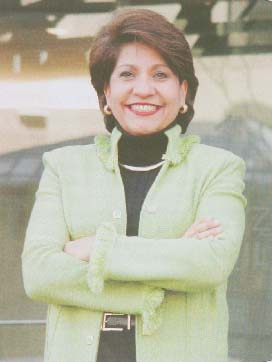

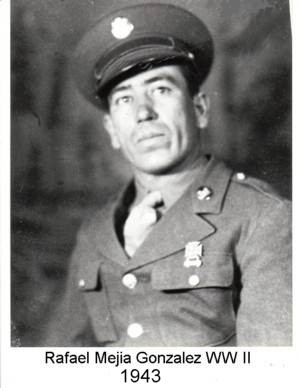
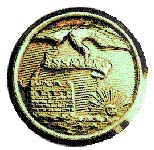
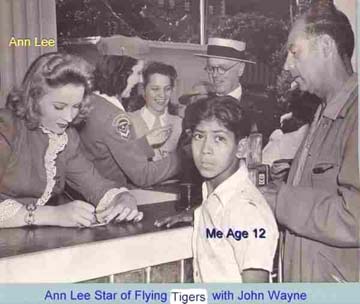
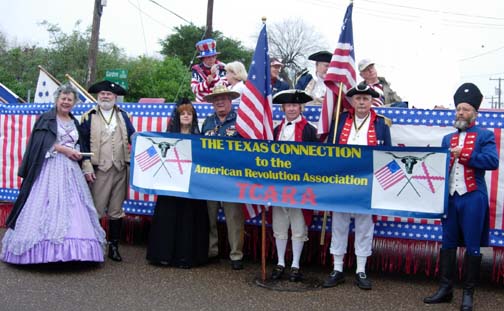
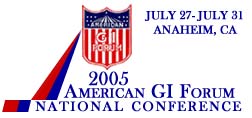
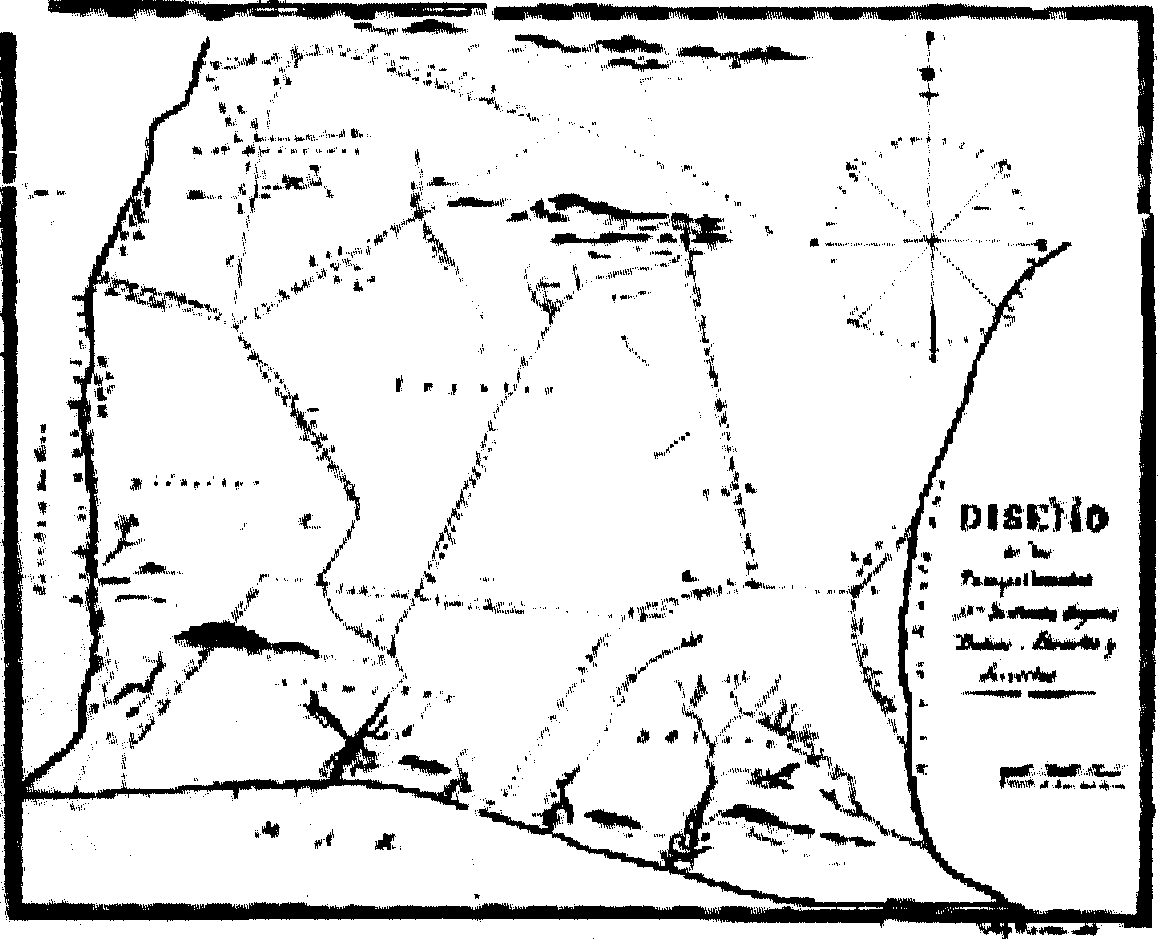 The
Los Angeles and San Gabriel Rivers didn't always follow their current
courses.
The
Los Angeles and San Gabriel Rivers didn't always follow their current
courses.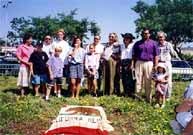
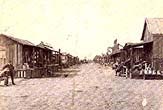
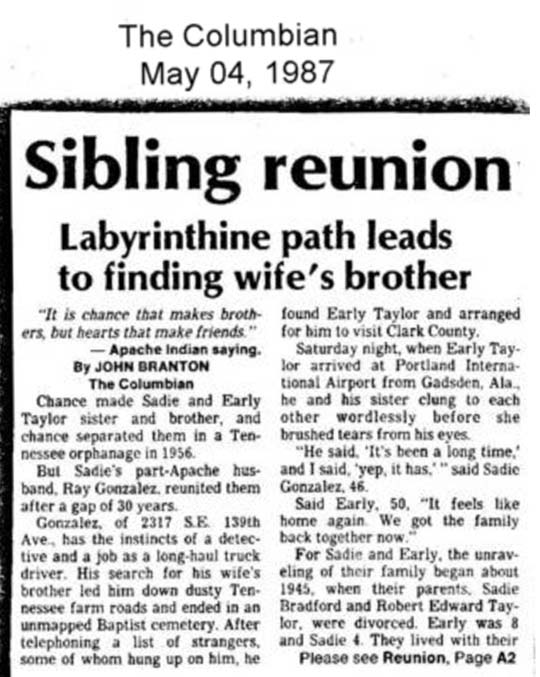
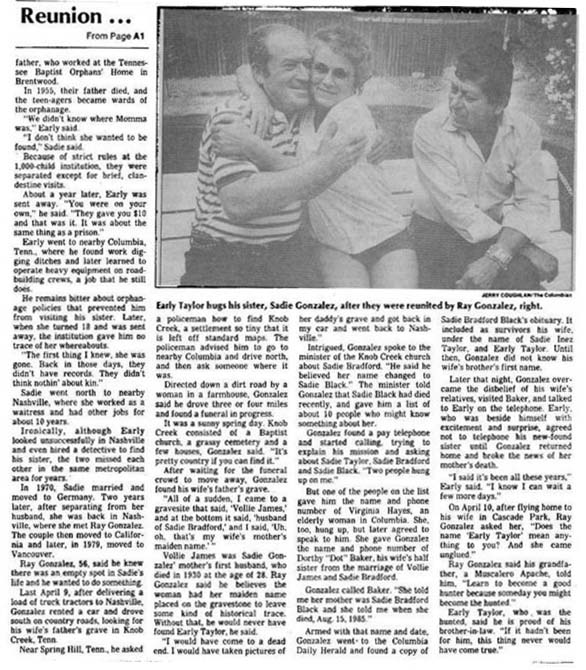
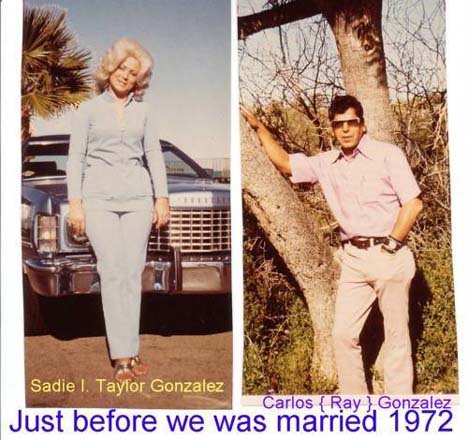
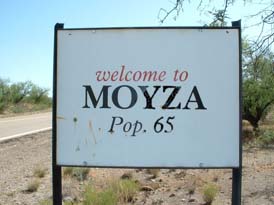

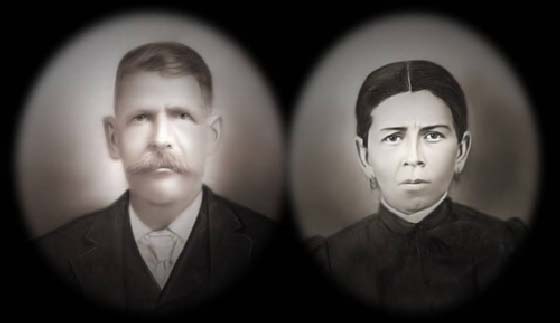
 .
.


 Best regards….. Leon
Best regards….. Leon 